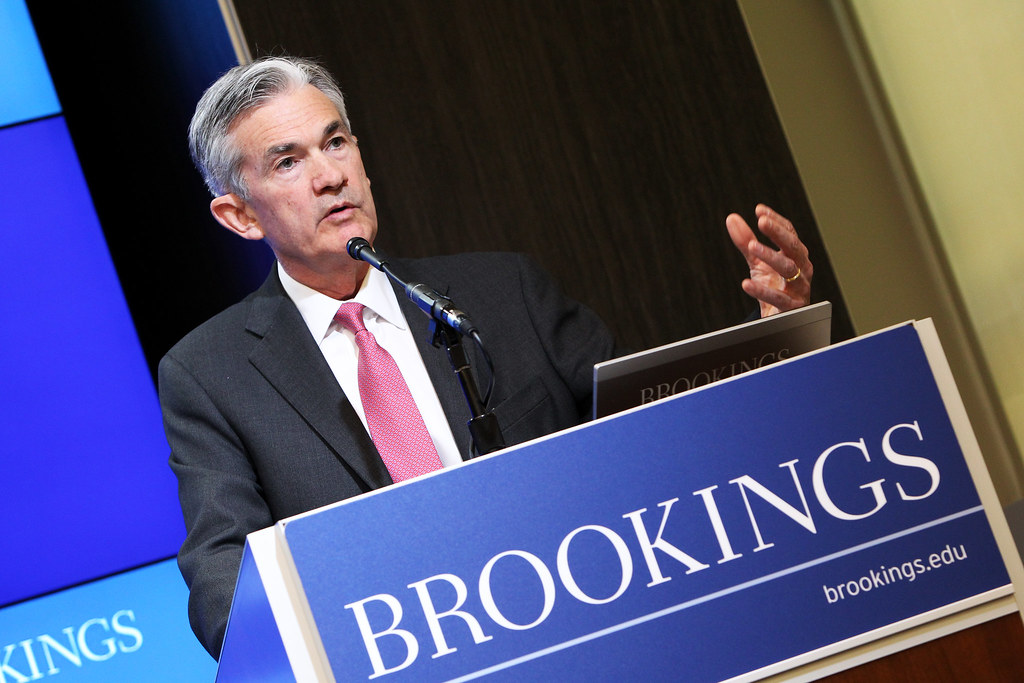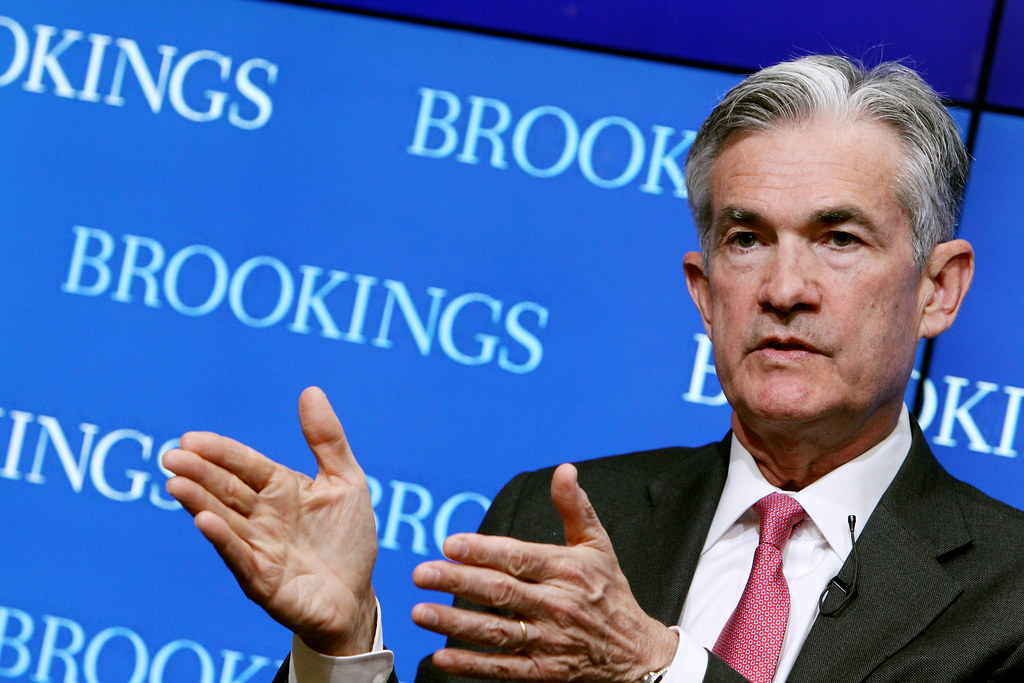Main Points:
- Reassessing Banking Access: Fed Chair Jerome Powell emphasizes the need for a fresh perspective on the banking challenges confronting the crypto industry.
- Operation Choke Point Criticism: Lawmakers criticize opaque and punitive regulatory measures that have effectively excluded crypto companies from essential banking services.
- Stablecoin Regulation and Future Potential: Powell expresses cautious optimism about stablecoins, highlighting their future potential for consumers and businesses under a robust regulatory framework.
- CBDC Rejection and Policy Shifts: For the first time, Powell explicitly rules out the issuance of a central bank digital currency in the United States, reinforcing a risk-averse stance.
- Emerging Trends and Technological Innovation: Recent developments in blockchain technology and regulatory reform point towards a more inclusive and technologically integrated future for digital assets.
In a sweeping address before the U.S. Senate Banking Committee, Federal Reserve Chair Jerome Powell called for a thorough reexamination of the challenges that cryptocurrency companies face in securing reliable banking services. Powell’s remarks, delivered on February 11, 2025, come at a time when the crypto industry finds itself increasingly isolated from traditional financial channels due to stringent compliance regimes and risk-averse banking practices. His statement not only acknowledged the current impediments but also signaled a potential shift in regulatory attitudes—one that may eventually pave the way for a more symbiotic relationship between crypto enterprises and conventional banks.
Reassessing Banking Access for Crypto Companies
Powell’s address underscored that the banking sector’s hesitance to serve cryptocurrency businesses is not the result of a deliberate exclusion. Instead, banks are reacting to a highly complex regulatory environment that demands strict adherence to anti-money laundering (AML) laws and robust compliance standards. In his testimony, Powell explained that financial institutions are extremely sensitive to the risks associated with potential compliance violations. These risks, often magnified by internal policies and regulatory pressures, have led banks to limit or entirely withhold services to crypto companies—even when such companies are operating within legal boundaries.
Powell pointed out that rather than an outright refusal motivated by bias against digital currencies, the current scenario reflects a system where compliance considerations take precedence over innovation. This environment has inadvertently created a de facto barrier for crypto companies, effectively “debanking” them and impeding their growth and operational efficiency. His call for a new perspective suggests that regulators and banks must work collaboratively to balance risk management with the need to foster innovation within the burgeoning digital assets sector.
Operation Choke Point and Regulatory Criticism
At the heart of the debate is the controversial regulatory practice known as “Operation Choke Point 2.0.” Originally coined in reference to the 2013 initiative—which targeted industries deemed high-risk, such as arms dealers and other businesses susceptible to fraud and money laundering—the term has now been repurposed to describe the modern-day exclusion of cryptocurrency companies from mainstream banking services.
During the Senate hearing, Senator Tim Scott sharply criticized the longstanding use of opaque regulatory frameworks that have subjected banks to “black box” directives, leaving little room for discretion or relief. He argued that regulatory bodies had long imposed an unduly burdensome regime on banks, one that effectively punished them for serving industries that, while innovative, also present novel compliance challenges.
Senator Cynthia Lummis further fueled the discussion by pointing to internal Federal Reserve manuals that appeared to promote increased monitoring of bank employees for “controversial” statements or activities. Lummis contended that such subjective measures have contributed to an environment where banks are overly cautious, fearing that any deviation from the norm might trigger punitive action. Her remarks evoked comparisons to the original Operation Choke Point, suggesting that these internal guidelines were a modern reincarnation of policies that intentionally sidelined sectors like the crypto industry.
Powell, however, expressed his gratitude for these criticisms, promising that the contentious guidelines would be reviewed and ultimately removed. His willingness to engage with lawmakers on this matter underscores a broader commitment within the Federal Reserve to adapt its policies to the evolving landscape of digital finance.
Stablecoin Regulation and Future Potential
Amid the heated debate over banking access and regulatory overreach, Powell also addressed the future of stablecoins—a category of digital assets that are pegged to traditional currencies. Powell acknowledged that while the ultimate trajectory of stablecoins remains uncertain, they hold significant promise as vehicles for consumer and business transactions if governed by a secure and well-structured regulatory framework.
He expressed cautious optimism about the role stablecoins could play in the future of finance. Powell lauded the efforts of Congress in developing regulatory frameworks that could support the safe and innovative use of stablecoins. He emphasized that the Federal Reserve is actively involved in providing technical opinions on pending stablecoin legislation, ensuring that any new rules strike the right balance between protecting consumers and fostering technological innovation.
The potential of stablecoins, according to Powell, lies in their ability to offer a bridge between the traditional financial system and the digital economy. By ensuring that these digital assets operate in a secure and consumer-friendly environment, regulators can encourage their adoption and integration into everyday financial transactions. This approach is seen as a critical step in supporting a future where digital assets and traditional banking coexist harmoniously.
CBDC Rejection and Policy Shifts
One of the most striking elements of Powell’s testimony was his unequivocal dismissal of the possibility that the Federal Reserve would issue a central bank digital currency (CBDC). When pressed by Senator Bernie Moreno on the subject, Powell stated, for the first time, that the U.S. would not move forward with issuing a CBDC during his tenure. This stance represents a marked departure from previous ambiguity on the issue, which had left open the possibility of a digital dollar emerging as an official extension of the traditional monetary system.
Powell’s firm position against a CBDC reflects deep-seated concerns about the potential implications such a move could have on financial stability, consumer privacy, and market dynamics. Critics of CBDCs have long argued that a state-issued digital currency might compromise the freedoms inherent in a free-market financial system and could introduce risks that outweigh the potential benefits.
Noted policy analysts, including Nicholas Anthony from the Cato Institute, have welcomed Powell’s clarity on this issue. Anthony pointed out that for many years the Federal Reserve had maintained a nebulous stance on CBDCs, leaving regulators and market participants uncertain about the future of digital currency. Powell’s current position, therefore, is seen as a significant and welcome change—one that reassures investors and the public that the Federal Reserve is committed to upholding the principles of financial freedom and market integrity.

Emerging Trends and Technological Innovation
Since Powell’s testimony, several recent developments have underscored the evolving relationship between digital assets and traditional finance. Financial institutions, once reticent to engage with the crypto sector, are now exploring innovative ways to integrate blockchain technology into their operations. Advances in compliance technologies, particularly in the areas of Know Your Customer (KYC) and anti-money laundering (AML) procedures, are making it increasingly feasible for banks to manage risks without completely excluding crypto companies.
Recent reports from industry experts and reputable sources such as CoinDesk and the Financial Times indicate that a new generation of blockchain-based compliance tools is on the rise. These tools leverage artificial intelligence and machine learning to offer more precise risk assessments, potentially reducing the regulatory burdens that have historically led to debanking practices. As banks begin to adopt these technologies, there is growing optimism that the gap between crypto companies and traditional banking services may begin to close.
Furthermore, legislative initiatives aimed at refining the regulatory framework for digital assets have gained momentum in early 2025. Several proposals are currently under review in Congress, designed to streamline the regulatory process and reduce the risk associated with servicing crypto businesses. These legislative efforts are complemented by international trends, with regulators in Europe and Asia also reevaluating their approaches to digital assets. The global consensus appears to be shifting toward a more nuanced, risk-based regulatory model that accommodates innovation while ensuring consumer protection.
Banks themselves are signaling a willingness to reassess their internal policies in light of these technological advances and regulatory changes. In response to Powell’s call for collaboration, several major financial institutions have indicated that they are reviewing their guidelines on serving crypto-related clients. This review process is expected to involve a careful balancing act—maintaining rigorous compliance standards while also embracing the transformative potential of blockchain technology.
Future Outlook
Federal Reserve Chair Jerome Powell’s recent testimony before the Senate Banking Committee has ignited a crucial conversation about the future of banking access for crypto companies. His call for a reexamination of the current regulatory framework, coupled with his readiness to remove overly restrictive internal guidelines, represents a significant step toward bridging the gap between traditional finance and the dynamic world of digital assets.
Powell’s nuanced stance on issues ranging from debanking and Operation Choke Point 2.0 to stablecoin regulation and the outright rejection of a U.S. CBDC signals a broader evolution in the regulatory landscape. As technological innovations continue to emerge and as legislative bodies work to refine the rules governing digital assets, the promise of a more inclusive, innovative, and secure financial future becomes increasingly tangible.
For crypto investors, digital asset innovators, and blockchain practitioners, these developments offer a beacon of hope—one that suggests the regulatory environment is gradually aligning with the rapid pace of technological change. By fostering dialogue between banks, regulators, and crypto businesses, the industry is poised to overcome longstanding obstacles and unlock new avenues for growth and innovation.
In summary, Powell’s remarks not only highlight the challenges that have long plagued crypto companies in accessing banking services but also chart a potential course for reform. With increased collaboration, technological innovation, and a balanced regulatory approach, the future of digital assets appears both promising and transformative.


